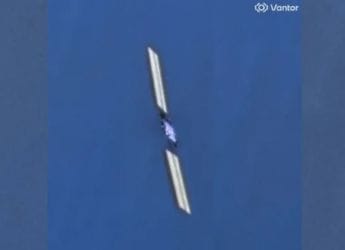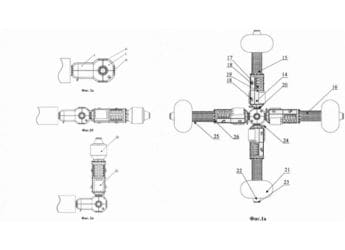- Home
- Science
- Science News
- NASA’s Lunar Trailblazer Moon Probe Struggles with Power and Signal Loss
NASA’s Lunar Trailblazer Moon Probe Struggles with Power and Signal Loss
The Lunar Trailblazer probe is facing power issues and communication failure, affecting its planned lunar mission.

Photo Credit: Lockheed Martin Space
NASA’s Lunar Trailblazer Faces Power Loss and Communication Failure
NASA's Lunar Trailblazer, a small satellite designed to map water ice on the moon, has been experiencing severe technical difficulties since its launch on February 26. The spacecraft, developed under a NASA and Caltech-led mission, has lost communication with ground control and is reportedly running low on power. Engineering data received before signal loss indicated that the probe is spinning slowly in space, affecting its ability to generate sufficient power from its solar panels. Efforts have been ongoing to restore contact, but no signal has been received in the past week.
Mission Status and Recovery Efforts
According to NASA's Jet Propulsion Laboratory (JPL), data collected via ground-based radar on March 2, suggested that Lunar Trailblazer remains in a low-power state. The Deep Space Network and additional observatories are being used to assess the spacecraft's position. It has been unable to conduct post-launch trajectory correction manoeuvres, which are critical for adjusting its course towards lunar orbit. Alternative strategies are being explored to salvage the mission, should communication be re-established.
Technical Challenges and Mission Risks
Lunar Trailblazer was selected as part of NASA's SIMPLEx (Small Innovative Missions for Planetary Exploration) programme, which accepts a higher level of risk in exchange for lower costs. Built by Lockheed Martin, the 200-kilogram spacecraft was designed to detect water ice through reflected light. Mission operations are being led from Caltech, with Lockheed Martin providing technical support. The spacecraft's power issues were detected shortly after deployment, with an initial loss of communication occurring on February 27. Although a brief transmission was received later, contact has not been restored since, as per reports.
Potential Future Course
Recovery options remain uncertain. If power levels increase due to a change in orientation, further attempts to regain control will be made. Meanwhile, NASA and its partners continue monitoring for signals in the hope of executing alternative trajectory adjustments. The total mission budget is estimated at $94.1 million, and the success of the mission now depends on overcoming its current technical setbacks.
Get your daily dose of tech news, reviews, and insights, in under 80 characters on Gadgets 360 Turbo. Connect with fellow tech lovers on our Forum. Follow us on X, Facebook, WhatsApp, Threads and Google News for instant updates. Catch all the action on our YouTube channel.
Related Stories
- Samsung Galaxy Unpacked 2025
- ChatGPT
- Redmi Note 14 Pro+
- iPhone 16
- Apple Vision Pro
- Oneplus 12
- OnePlus Nord CE 3 Lite 5G
- iPhone 13
- Xiaomi 14 Pro
- Oppo Find N3
- Tecno Spark Go (2023)
- Realme V30
- Best Phones Under 25000
- Samsung Galaxy S24 Series
- Cryptocurrency
- iQoo 12
- Samsung Galaxy S24 Ultra
- Giottus
- Samsung Galaxy Z Flip 5
- Apple 'Scary Fast'
- Housefull 5
- GoPro Hero 12 Black Review
- Invincible Season 2
- JioGlass
- HD Ready TV
- Laptop Under 50000
- Smartwatch Under 10000
- Latest Mobile Phones
- Compare Phones
- Huawei Nova 15
- Huawei Nova 15 Pro
- Huawei Nova 15 Ultra
- OnePlus 15R
- Realme Narzo 90x 5G
- Realme Narzo 90 5G
- Vivo S50 Pro Mini
- Vivo S50
- Asus ProArt P16
- MacBook Pro 14-inch (M5, 2025)
- Huawei MatePad 11.5 (2026)
- OnePlus Pad Go 2 (5G)
- Huawei Watch 10th Anniversary Edition
- OnePlus Watch Lite
- Acerpure Nitro Z Series 100-inch QLED TV
- Samsung 43 Inch LED Ultra HD (4K) Smart TV (UA43UE81AFULXL)
- Asus ROG Ally
- Nintendo Switch Lite
- Haier 1.6 Ton 5 Star Inverter Split AC (HSU19G-MZAID5BN-INV)
- Haier 1.6 Ton 5 Star Inverter Split AC (HSU19G-MZAIM5BN-INV)

















